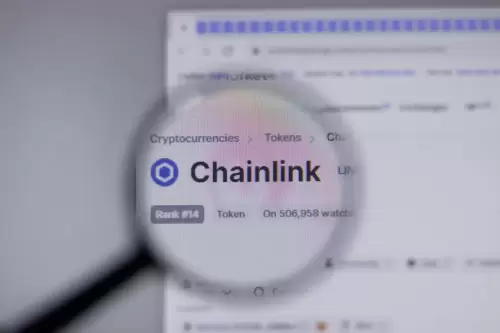 |
|
 |
|
 |
|
 |
|
 |
|
 |
|
 |
|
 |
|
 |
|
 |
|
 |
|
 |
|
 |
|
 |
|
 |
|
Cryptocurrency News Articles
Bitcoin Scaling Showdown: Lightning Network, Sztorc, and the Future of Payments
Jun 24, 2025 at 04:05 am
Is the Lightning Network a 'giant failure'? Paul Sztorc and Alex Gladstein clash over Bitcoin's scaling solution. Dive into the debate!

Bitcoin Scaling Showdown: Lightning Network, Sztorc, and the Future of Payments
The Bitcoin scaling debate rages on! Is the Lightning Network living up to its promise, or is it, as Paul Sztorc claims, a “giant failure”? This blog post dives into the heart of the matter, exploring the key arguments surrounding Bitcoin scaling, the Lightning Network, and the perspectives of figures like Paul Sztorc and Alex Gladstein.
The Great Scaling Debate: A Quick Recap
Back in the day, from 2015 to 2017 to be exact, the Bitcoin community was locked in a heated debate about how to scale Bitcoin payments to a global audience. Some folks wanted a hard fork to increase on-chain capacity. Others, like the Bitcoin Core contributors, favored maximizing the existing block space. The compromise? Segregated Witness (SegWit), which paved the way for the Lightning Network as a second-layer payment solution.
Sztorc vs. Gladstein: A Clash of Visions
Paul Sztorc, drivechain inventor and LayerTwo Labs CEO, hasn't held back on his criticism of the Lightning Network. He sees it as fundamentally flawed and not scalable in the long run. On the other side, Alex Gladstein of the Human Rights Foundation champions the Lightning Network's current utility, pointing to its real-world applications and the value it brings to users today.
Gladstein's Perspective: Real-World Impact
Gladstein highlights the Lightning Network's adoption in areas like Nostr Zaps, integration by major exchanges like Binance and Coinbase, and the upcoming integration for Square merchants. He also emphasizes its importance in regions where Bitcoin's lack of KYC/AML restrictions is a lifeline for those who need it most. He argues that the network's usability has drastically improved over the past few years.
Sztorc's Counterpoint: Long-Term Scalability Concerns
Sztorc dismisses these examples as short-sighted. He argues that the Lightning Network struggles under pressure, citing the increased fees caused by Ordinals Inscriptions as an example. He points out that reverting to the Bitcoin blockchain or opening a low-balance channel becomes uneconomical during high-fee periods.
Drivechains: Sztorc's Alternative Solution
Sztorc champions drivechains, a type of Bitcoin sidechain where BTC is controlled by the miners, as a superior solution. While Gladstein acknowledges the idea's theoretical appeal, he notes that drivechains are currently just that: theoretical. Critics, like Bitcoin Core contributor Peter Todd, argue that drivechains could negatively impact Bitcoin's base layer.
The Lightning Network: A Central Nervous System?
Increasingly, the Lightning Network is viewed less as a solution for everyday users and more as a connective infrastructure between different layers within the Bitcoin ecosystem. Gladstein admits that his perspective has evolved, now seeing Lightning as a “central nervous system-type network” connecting end-users, on-chain users, businesses, and exchanges.
Federated Models: A Point of Contention
Sztorc strongly opposes federated models, arguing that they represent a significant step backward for Bitcoin's fundamental properties. He believes that users essentially relinquish control of their coins with little recourse. While Gladstein is open to better models, he is also excited about technologies like Cashu, which offer enhanced user privacy within the existing framework.
Amazon and Google's Role: Lightning Nodes in the Cloud
It's also worth noting that tech giants like Amazon and Google are heavily involved in the Lightning Network. According to data, approximately 45% of Bitcoin's Lightning Network nodes run on Amazon Web Services (AWS) and Google Cloud. Amazon alone accounts for nearly 30% of all Lightning nodes, leading some to speculate about future Bitcoin payment integration on its e-commerce platform.
The Future is Unwritten
The debate surrounding Bitcoin scaling and the Lightning Network is far from over. While Sztorc remains skeptical, others see the Lightning Network as a constantly evolving technology with the potential to transform the future of payments. As adoption continues to grow, only time will tell which approach will ultimately prevail.
So, is the Lightning Network a giant failure, or is it the future of Bitcoin payments? The jury's still out, but one thing's for sure: the conversation is heating up, and it's definitely worth watching!
Disclaimer:info@kdj.com
The information provided is not trading advice. kdj.com does not assume any responsibility for any investments made based on the information provided in this article. Cryptocurrencies are highly volatile and it is highly recommended that you invest with caution after thorough research!
If you believe that the content used on this website infringes your copyright, please contact us immediately (info@kdj.com) and we will delete it promptly.





























































